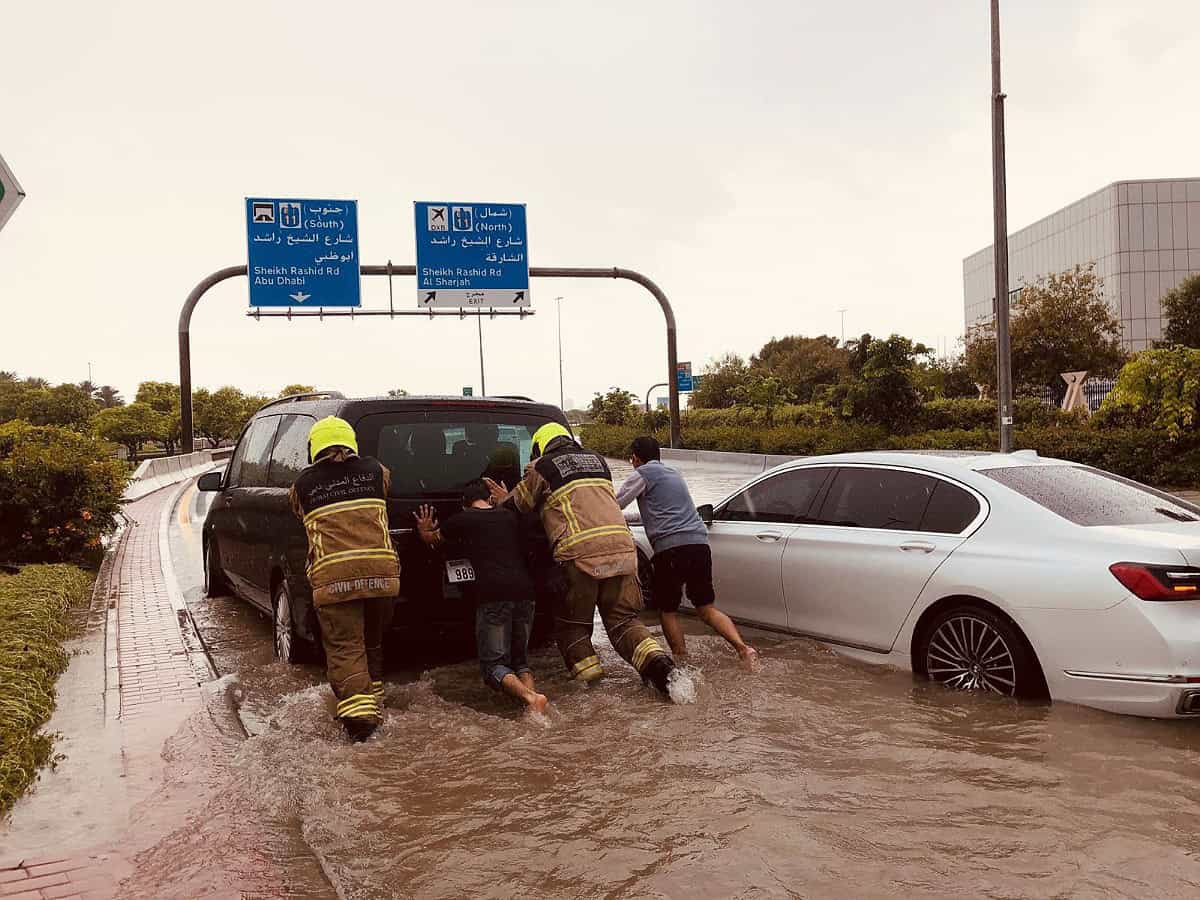
Dubai International Airport (DXB) on Wednesday, April 17, issued a warning to passengers to avoid the airport unless ‘absolutely’ necessary due to severe weather-related operational disruptions.
“Flights continue to be delayed and diverted. Please contact your airline for the latest information on your flight status. We are working hard to recover operations as quickly as possible in very challenging conditions,” DXB wrote on X.
“Due to the significant flooding and road blockages, it is challenging for departing guests to reach the airport and arrival guests to leave the terminals, resulting in limited transport options,” it added.
“We strongly urge you to check your flight status with your airline before coming to the airport and allow extra travel time,” DXB said.
“Recovery will take some time. We thank you for your patience and understanding while we work through these challenges.”
The weather department predicts more rain and storms today, causing over 500 flights to be diverted, delayed, or cancelled.
Emirates suspends check-in for all flights at DXB
Dubai-based Emirates Airlines has suspended check-in for passengers departing from DXB on Wednesday due to heavy rains.
“Emirates is suspending check-in for passengers departing DUbai airports from 8:00am on 17 April until midnight, due to operational challenges caused by bad weather and road conditions. Affected customers can contact their booking agent or visit https://emirat.es/support for rebooking,” the airline said on X.
“Passengers arriving in Dubai and already in transit will continue to be processed for their flights. Customers can expect delays to departures and arrivals, and are advised to check the latest flight schedules on https://emirat.es/flightstatus.”
UAE witnesses heaviest rainfall in 75 years
The United Arab Emirates (UAE) on Tuesday, April 16, witnessed the largest amount of rainfall in modern history over the past 24 hours, marking the highest since 1949.
The National Centre of Meteorology (NCM) recorded the highest rainfall in the Khatm Al Shakla area in Al Ain, reaching 254 mm in less than 24 hours.
This is an exceptional event in the climatic history of the UAE, with more rain expected in the coming hours.
Did cloud seeding cause floods in Dubai?
Weather experts attribute the rainwater to a larger storm system affecting the Arabian Peninsula and the Gulf of Oman, causing unusually wet weather in neighbouring Oman and southern-eastern Iran.
Colin McCarthy, a climate scientist, attributes the heavy rains to intense thunderstorms originating from the warm waters of the Persian Gulf, AFP reported.
Climatologist Friederike Otto suggests that extreme rainfall in the UAE and other regions is likely due to global warming, making the rain heavier.
As per a report by Bloomberg, heavy rains and flooding in Dubai, UAE are linked to active cloud seeding operations, with seven missions conducted over two days to maximize rainfall.
Taking to X, Jeff Berardelli, chief meteorologist and climate specialist (Tampa Bay, US) pointed out that cloud seeding could have enhanced heavy rains in Dubai.
“Dubai is no stranger to dust but the storm had engulfed a huge amount of dust right over the area. Dust is also a cloud seeder, we call it condensation nuclei, so how can one be certain the man-made seeding was responsible when a desert’s worth of dust was suspended overhead?,” Berardelli wrote on X on Wednesday.
About cloud seeding
The process of artificially encouraging a cloud to produce rain is known as cloud seeding. It began in the United Arab Emirates at the end of the 1990s, and since then, the number of annual missions has increased.
Cloud seeding is a strategy used by the UAE government to combat water challenges.
Cloud seeding enhances precipitation from existing cloud formations. This is done by shooting special flares into clouds filled with salt crystals into convective clouds. This process then attracts smaller water particles that collide and become heavier, which then fall as rain.
NCM has a sophisticated network of radars that monitor the country’s atmosphere 24 hours a day and provide cloud data. A team of pilots and technicians analyze the data and perform cloud seeding operations once seedable clouds are detected.
UAE is one of the first countries in the Persian Gulf region to use cloud seeding technology. Along tackling with water scarcity, scientists use cloud seeding technology to calm the hot summers.



